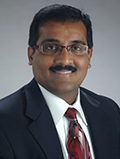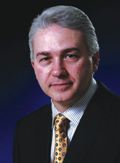Great Science Continues to Keep Electrophysiology Exciting!
Dhanunjaya Lakkireddy, Andrea Natale
Hope you had a great Spring Break and back to the grind. In this issue of the journal we have several interesting original studies, case reports and review articles. Patten etal reviewed atrial fibrillation (AF) and hypertrophic cardiomyopathy (HCM) in a comprehensive fashion with greater depths of detail. Martin etal shared their 2-year outcomes on the ablation of complex fractionated electrograms. AF, characterized by rapid disorganized electrical activation of myocardium, is caused by and accompanied by remodeling of myocardial tissue. To explore this connection Buttner etal applied nonlinear optical microscopy (NLOM) to visualize typical myocardial features and atrial fibrillation effects in order to test a non-destructive imaging technology that in principle can be applied in vivo. Coherent anti-Stokes Raman scattering, endogenous two-photon excited fluorescence, and second harmonic generation were used to inspect unstained human atrial myocardium in patients who underwent surgical Cox-MAZE procedure with amputation of left atrial appendage. Development of in vivo application of the NLOM technique may represent a revolutionary approach in characterizing atrial fibrillation associated myocardial remodeling with important implications for therapy individualization and monitoring.
In February we successfully wrapped up the 5th edition of the International Symposium on Left Atrial Appendage (ISLAA2018) in Long Beach and EP Live in Austin. Both the conferences were well attended and shared the state of the art practices in left atrial appendage closure and clinical EP practice. The VEST trial was presented as the late breaker at the American College of Cardiology annual sessions in Orlando with less than promising benefit of wearable external defibrillators for sudden cardiac death prevention in patients with acute myocardial infarction and low ejection fraction. The study was obviously limited by poor compliance and lack of appropriate risk stratification process or predictors. This really opens up a great debate on whether WEDs should routinely be used in clinical practice and how much more date do we need to understand its true clinical utility.
Heart Rhythm Society (HRS) annual sessions this year will be in Boston. It will be an exciting year with some much awaited clinical trials to be presented. The CABANA trial will probably be presented at the meeting. This trial results will have some profound impact on the EP practice and our approach to AF therapy. We will you all very pleasant spring until the next issue
Best wishes

DJ Lakkireddy MD, FACC, FHRSAssociate Editor JAFIB

Andrea Natale MD, FACC, FHRS, FESC Editor-in-Chief JAFIB